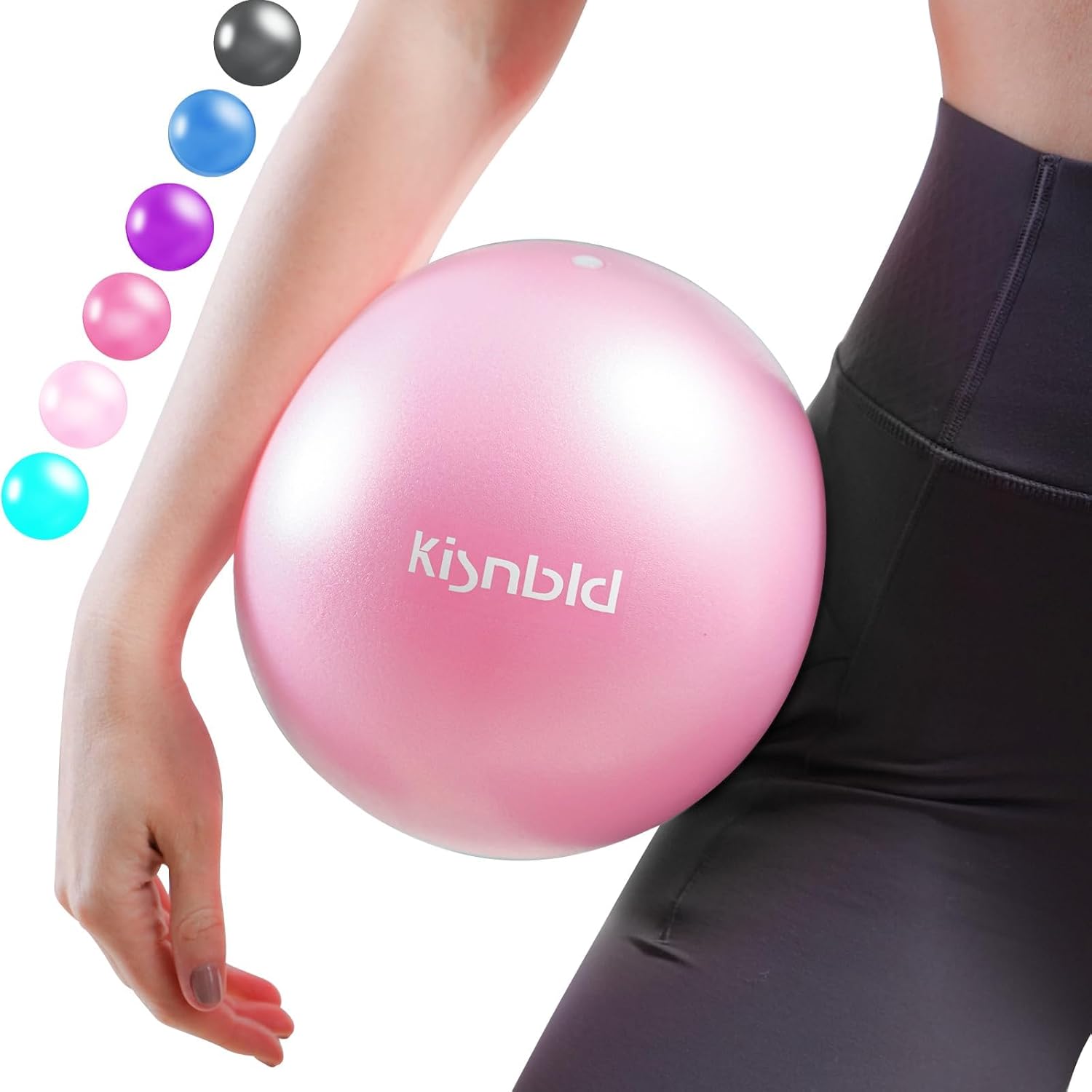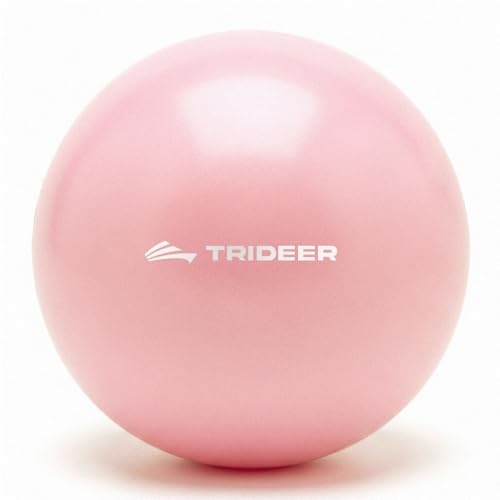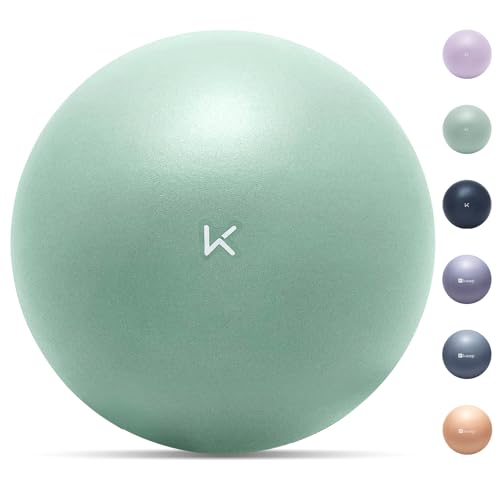A Pilates instructor says everyone should own a Pilates ball—here's why
Adjust the intensity of your Pilates routine with this versatile tool
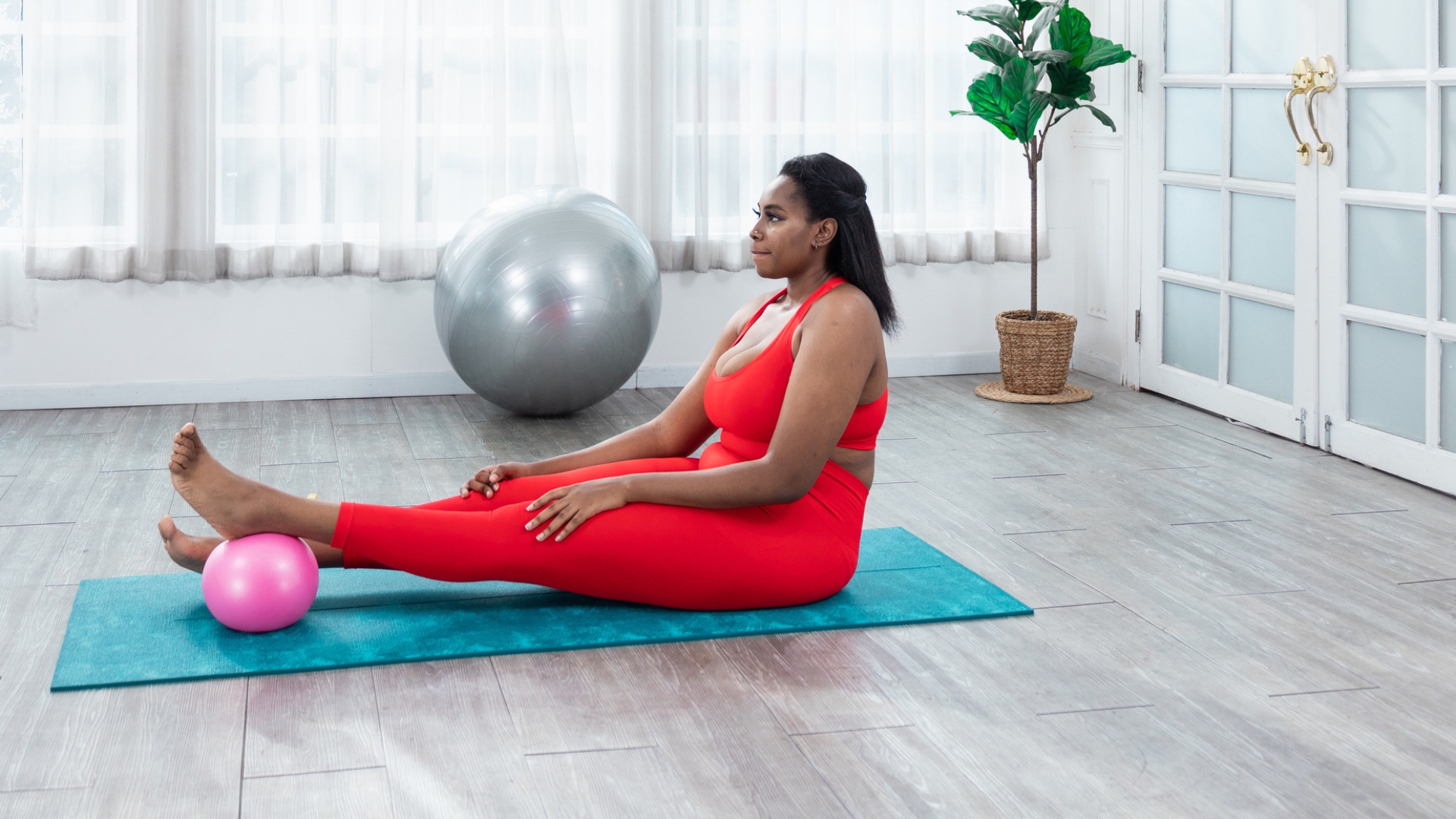
A Pilates ball is an inexpensive piece of equipment that can elevate your practice.
It can support you during certain moves or add an extra challenge when you’re ready to progress.
Lesley Logan, a Pilates instructor and cofounder of OnlinePilatesClasses.com, is an advocate for adding props, like the Pilates ball, to your routine.
She says you can place it behind your back or head for support on floor-based moves, or squeeze it between your thighs, calves or ankles to increase leg muscle engagement.
You can also use it to check your form on moves, to make sure you're targeting the right muscles.
If you're new to working out with the ball, Logan suggests starting with the five moves below.
Black Friday Pilates ball deals
Exercise explainers
1. Rolling like a ball

Reps: 3-5
Start your week with achievable workout ideas, health tips and wellbeing advice in your inbox.
This move primarily challenges your core and hamstrings.
How to do it
- Sit upright on your mat with your knees bent and your feet flat on the floor close to your buttocks.
- Place the Pilates ball between your heels and buttocks.
- Lift your feet, hold your ankles or shins and focus your gaze toward your feet.
- Roll back onto your shoulders, lift your head and roll back up to your starting position, then repeat.
- Maintain your tucked position while rolling without touching your feet on the floor.
2. Double straight leg stretch
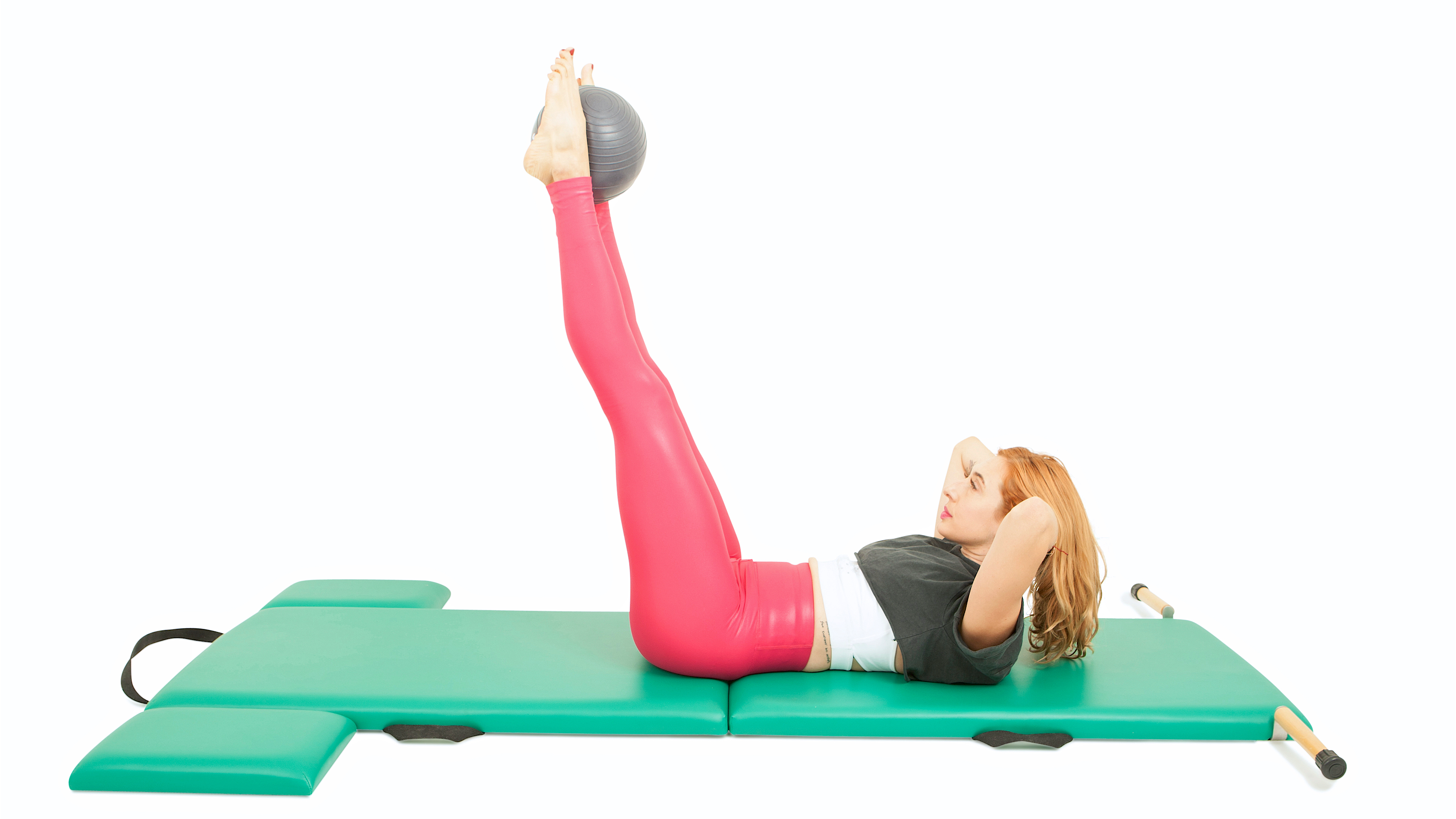
Reps: 5-10
Logan recommends this exercise to challenge your coordination, inner thighs and abs.
How to do it:
- Lie on your back and place a Pilates ball between your ankles.
- Lift your head and chest and interlace your hands behind your head, elbows out to the sides.
- Slowly extend your legs straight out in front, using your core muscles to control the movement.
- Squeeze the ball as you lift and lower your legs—that’s one repetition.
- Keep your head and chest lifted throughout.
- Complete all the repetitions then lower your head and chest.
3. Criss cross
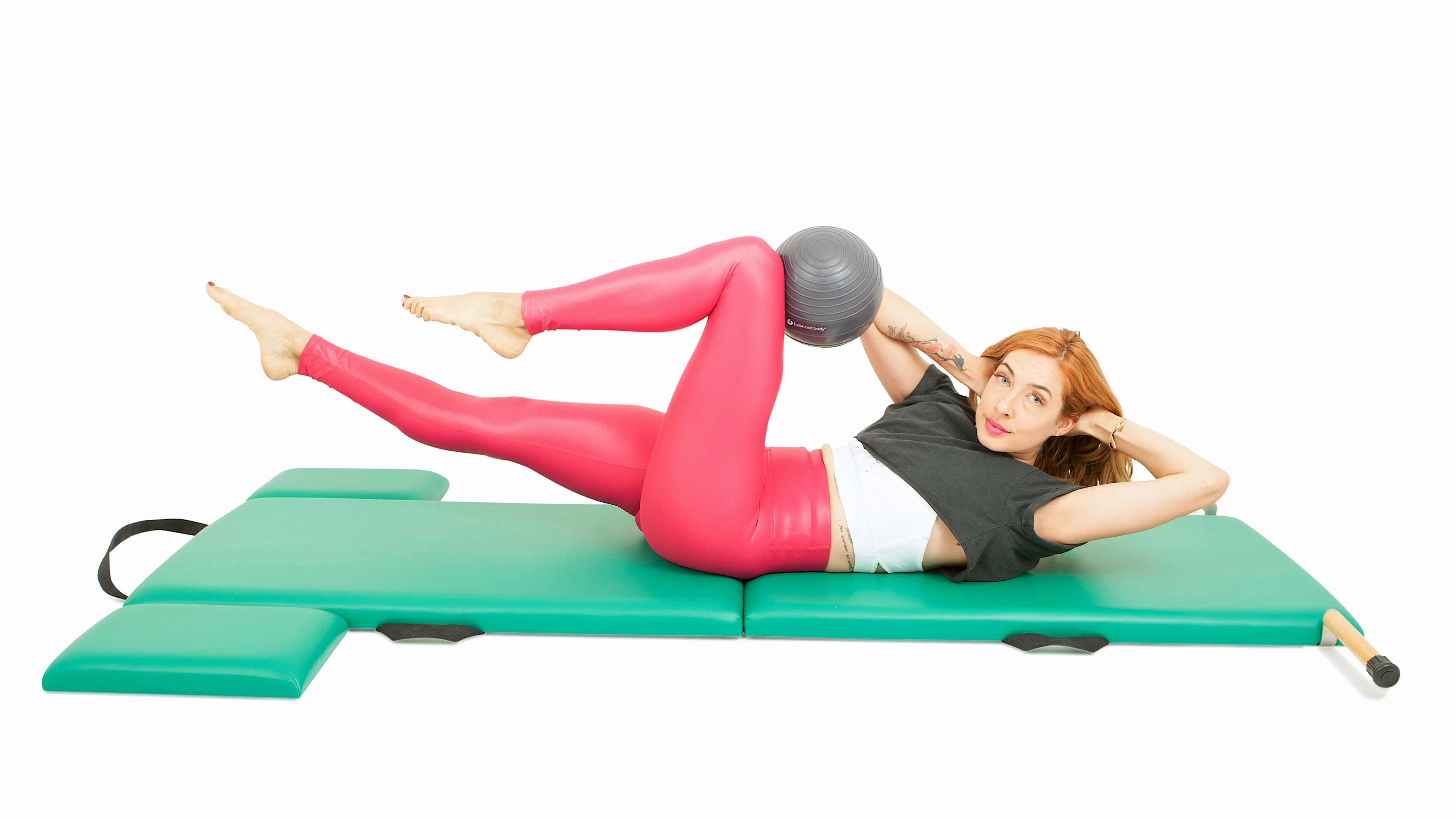
Reps: 3-5 each side
This exercise primarily targets the obliques.
How to do it:
- Lie on your back with your hands interlaced behind your head, knees bent and feet flat on the floor.
- Lift your legs so your knees are over your hips, calves parallel to the floor, and point your elbows forward.
- Place the Pilates ball between your knees and elbows.
- Lift your head and chest to start and maintain this curled position throughout.
- Extend your right leg forward and left arm back, while squeezing the ball to hold it in place with your other knee and elbow.
- Return to the starting position with control and repeat on the other side.
You can see a full demonstration of the move here.
4. Swan
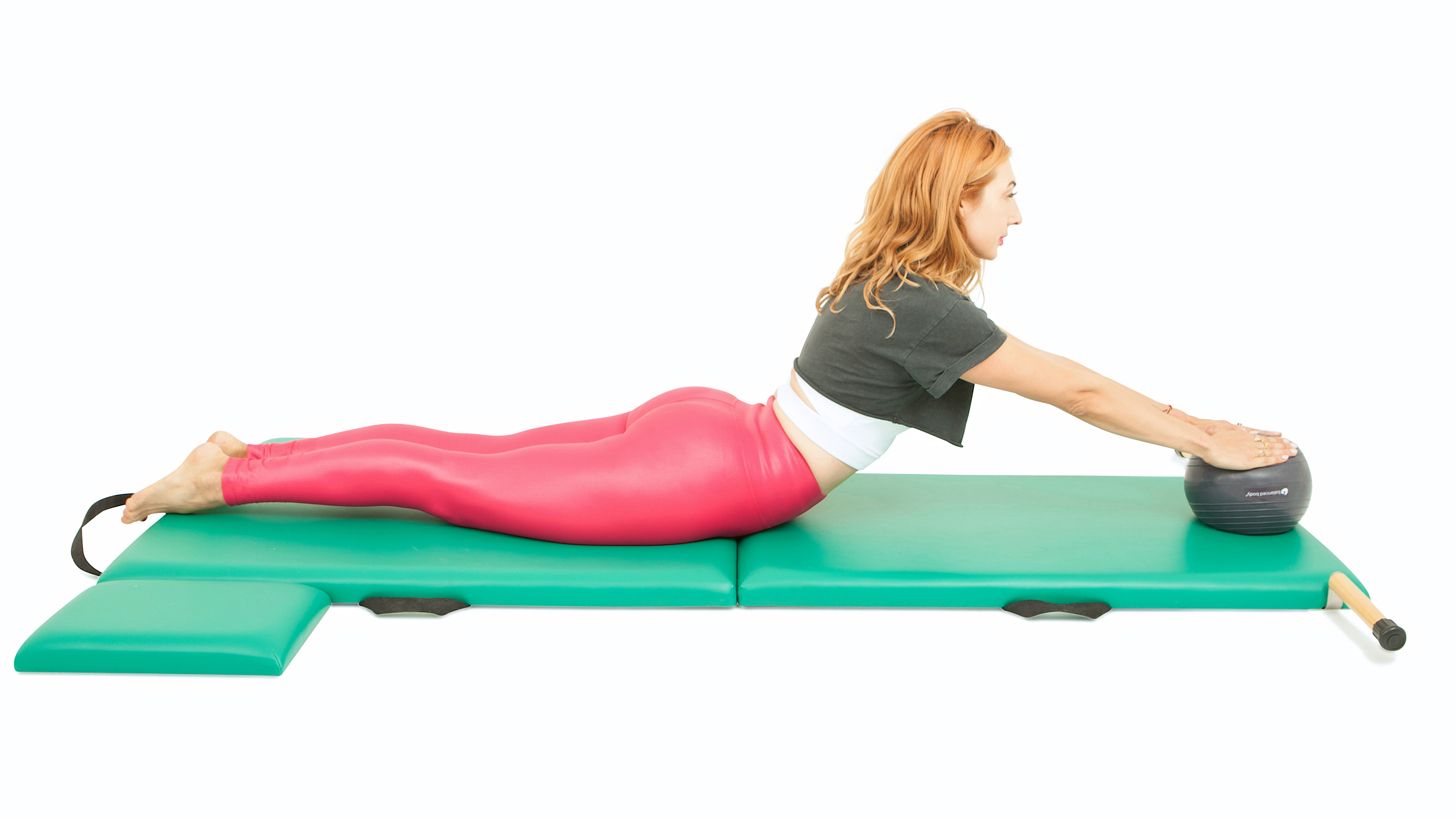
Reps: 3-5
Logan says this exercise will challenge the spinal extensor muscles while also working the abs.
How to do it:
- Lie on your front with your legs extended behind you.
- Place your forehead on the floor, extend your arms in front and put your hands on top of the Pilates ball.
- Press your hands into the ball as you lift your head and chest, using your core muscles to control the movement.
- Keep your core engaged as you lower your head and chest back down to the floor.
You can see the full move demonstrated here in a video.
5. Side kick

Reps: 3-5 each side, each variation
Logan says this exercise works the obliques and outer hips.
How to do it:
- Lie on your side, propped up on your right forearm, with both legs extended in front of you at an angle.
- Place the Pilates ball under your right armpit, in the gap between your side and arm. Rest your left hand on the floor in front.
- Raise your top leg to hip height and slowly move it forward and back without pressing your side into the ball.
- After three to five kicks, lift your top leg higher and do another three to five larger kicks forward and back. Avoid collapsing into the ball.
- If you lean into the ball, lower your leg until you can maintain space between you and the ball.
- Complete your repetitions on one side, then switch sides and repeat.
You can see a full demonstration of the move here.

Lou Mudge is a Health Writer at Future Plc, working across Fit&Well and Coach. She previously worked for Live Science, and regularly writes for Space.com and Pet's Radar. Based in Bath, UK, she has a passion for food, nutrition and health and is eager to demystify diet culture in order to make health and fitness accessible to everybody.
Multiple diagnoses in her early twenties sparked an interest in the gut-brain axis and the impact that diet and exercise can have on both physical and mental health. She was put on the FODMAP elimination diet during this time and learned to adapt recipes to fit these parameters, while retaining core flavors and textures, and now enjoys cooking for gut health.
You must confirm your public display name before commenting
Please logout and then login again, you will then be prompted to enter your display name.

